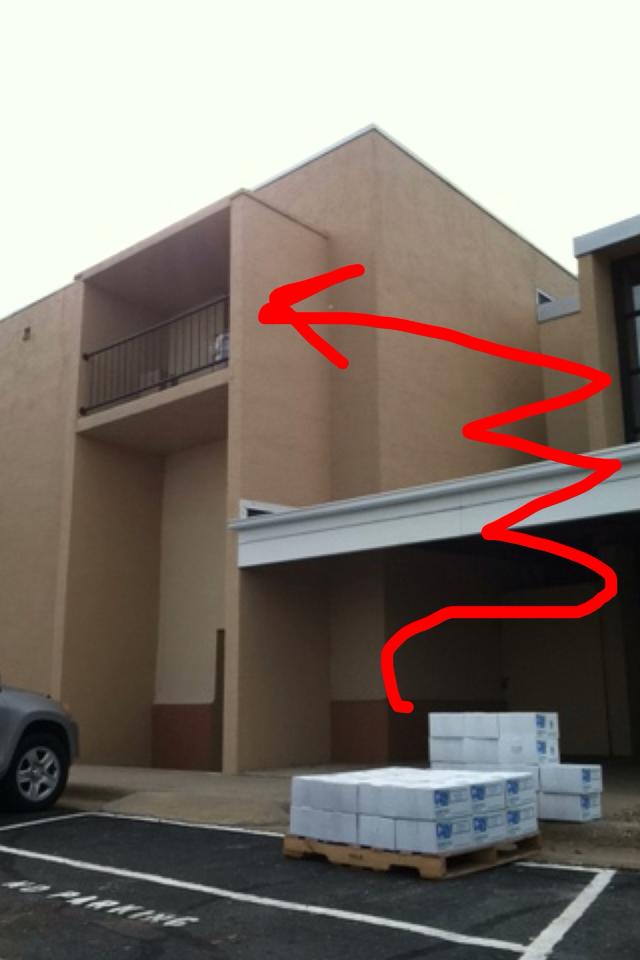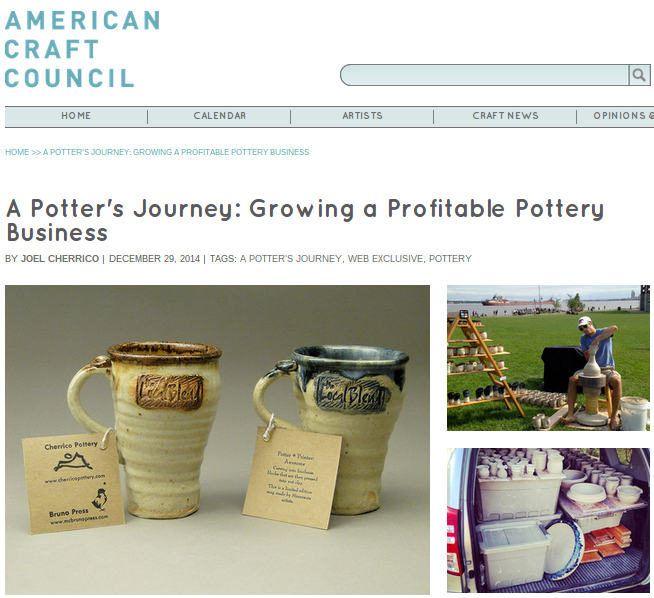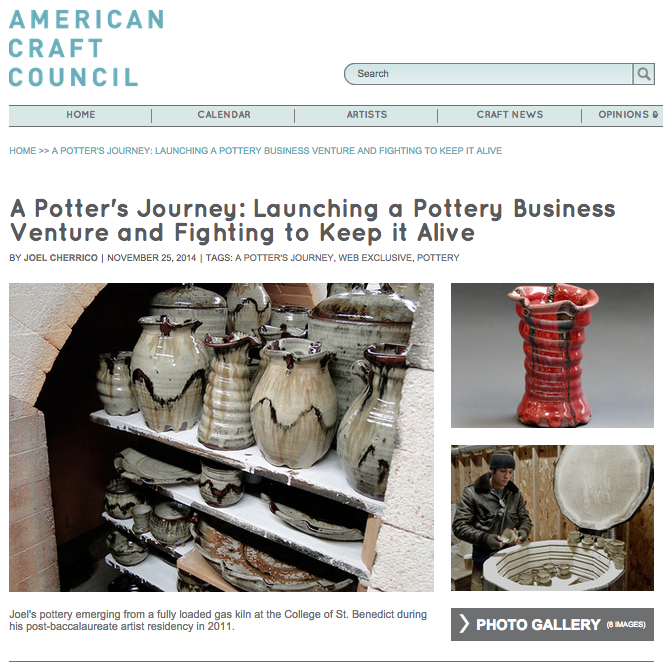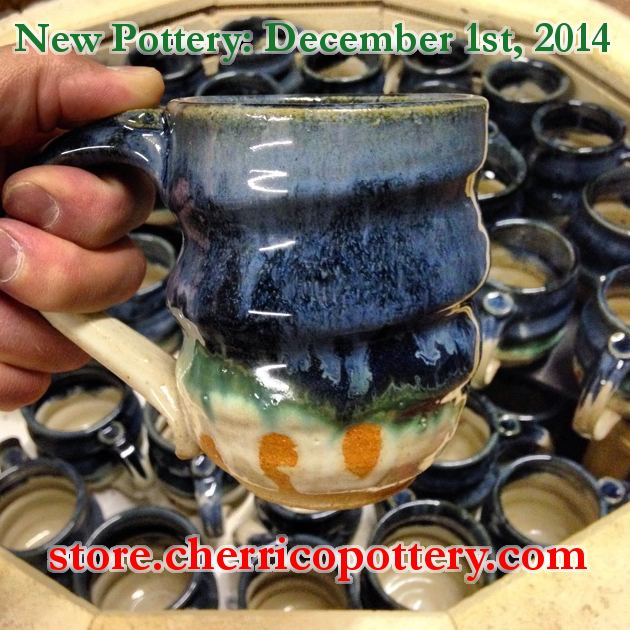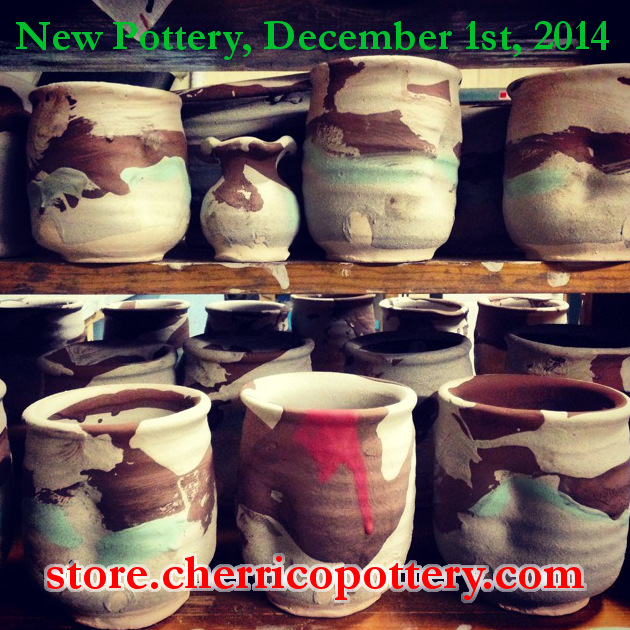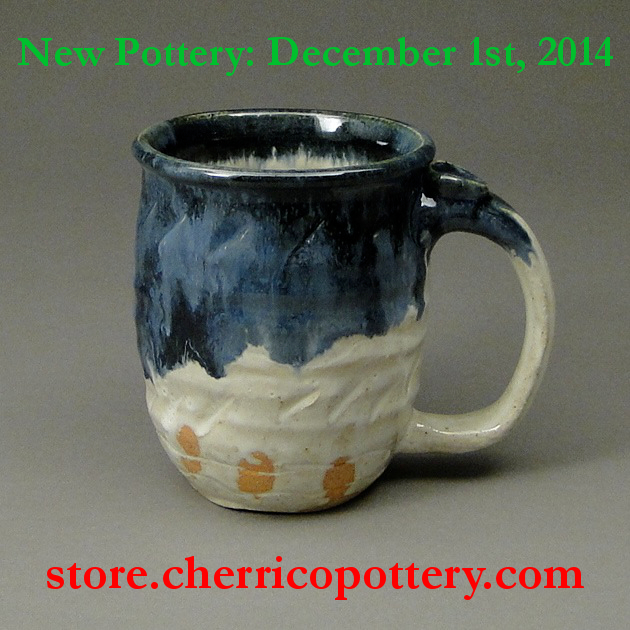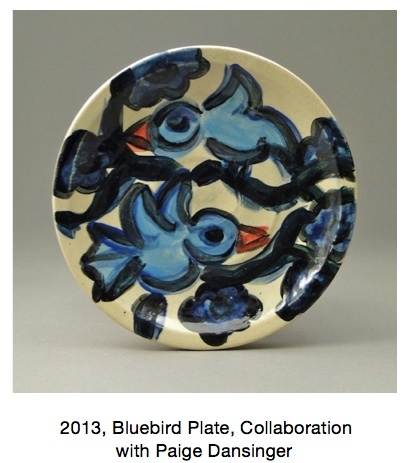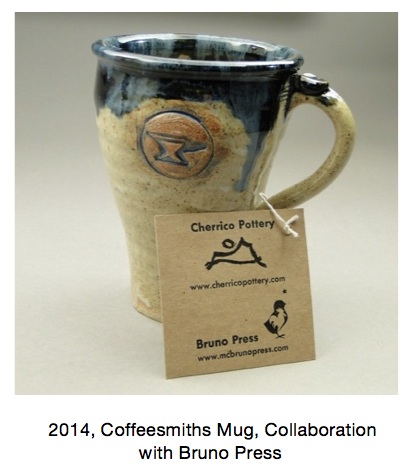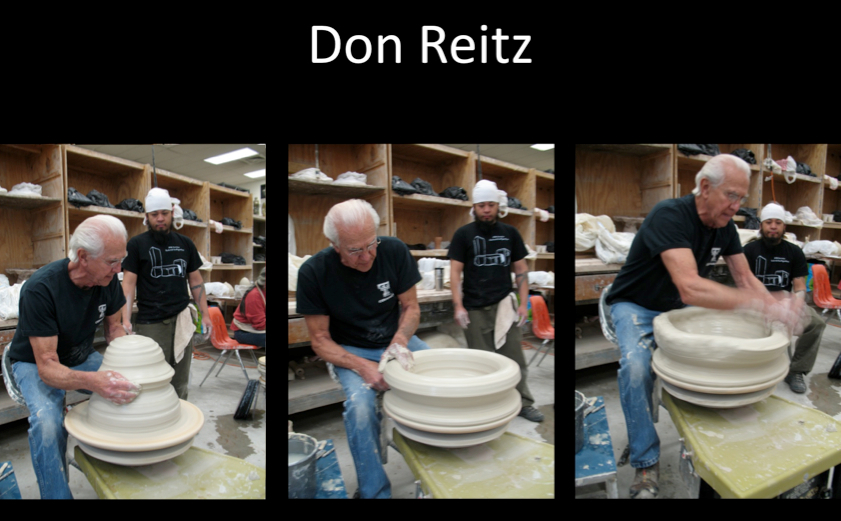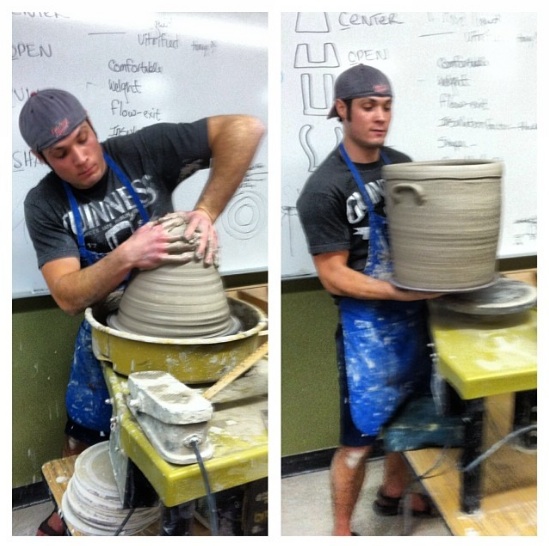This is the sixth post in a series entitled, “A Potter’s Journey” for American Craft Council’s website. This post tells the story of growing my pottery business into a profitable livelihood:
American Craft Council, “A Potter’s Journey: Launching a Pottery Business Venture and Fighting to Keep it Alive”
This is the fifth post in a series entitled, “A Potter’s Journey” for American Craft Council’s website. This post tells the story of launching my pottery business venture immediately after college graduation, as well as the trials and tribulations that I overcame during the first 3 years of business:
“A Potter’s Journey: Launching a Pottery Business Venture and Fighting to Keep it Alive”
Check back for my newest pottery, available in my online store December 1st:
My First TV and Radio Spots to Promote Pottery and Duluth Art in Bayfront Park
After 3 hours of driving in the dark, I arrived safely at WDIO TV studio in Duluth just before 6:00am. Follow the link below for the feature story and video:
Art in Bayfront Park Showcases Artists from Across the Country
Special thanks to Executive Director Deborah and her assiatant Liz for arranging this awesome publicity! Next, Liz and I zipped over to 95 KQDS for 2 more quick blurbs on the radio.
If you’re in the Duluth area swoop by Art in Bayfront Park tomorrow 10-6pm or Sunday 10-4pm and see my new body of work! I’ll also be performing pottery demonstrations in front of a gorgeous Lake Superior backdrop. Here is a photo from when I attended in 2012. Hope to see you there!

Ogres, Princesses, and Pretty Blue Glazes
I remember the first time glazing a pot in Sam Johnson’s ceramics class last year. I had made this slightly uneven coil vase with pockmarked walls nearly an inch thick. The piece was truly ugly, an ogre really, but I couldn’t see the pot as anything other than beautiful. It was my Princess Fiona and I was its Shrek…At least until I glazed it.
Like most naive ceramics students, I pictured glazing just like painting. I picked out a handful of colors using the test tiles as my guide, and then brushed swooping glaze patterns all over my vase. By the time I finished, the pot looked like something straight out a kindergarten arts and crafts class. I on the other hand thought it was a masterpiece – a trophy of abstract art. When the thing (it was beyond a pot at this point) finally came out of the kiln, it was hideous. I looked over at my professor for encouragement. Sam walked over, took one look at my monster, turned to the class and said:
“Opening a kiln can be like Christmas or Halloween. Either the pots look amazing and you fall in love, or the results are horrible and you want to smash everything.”
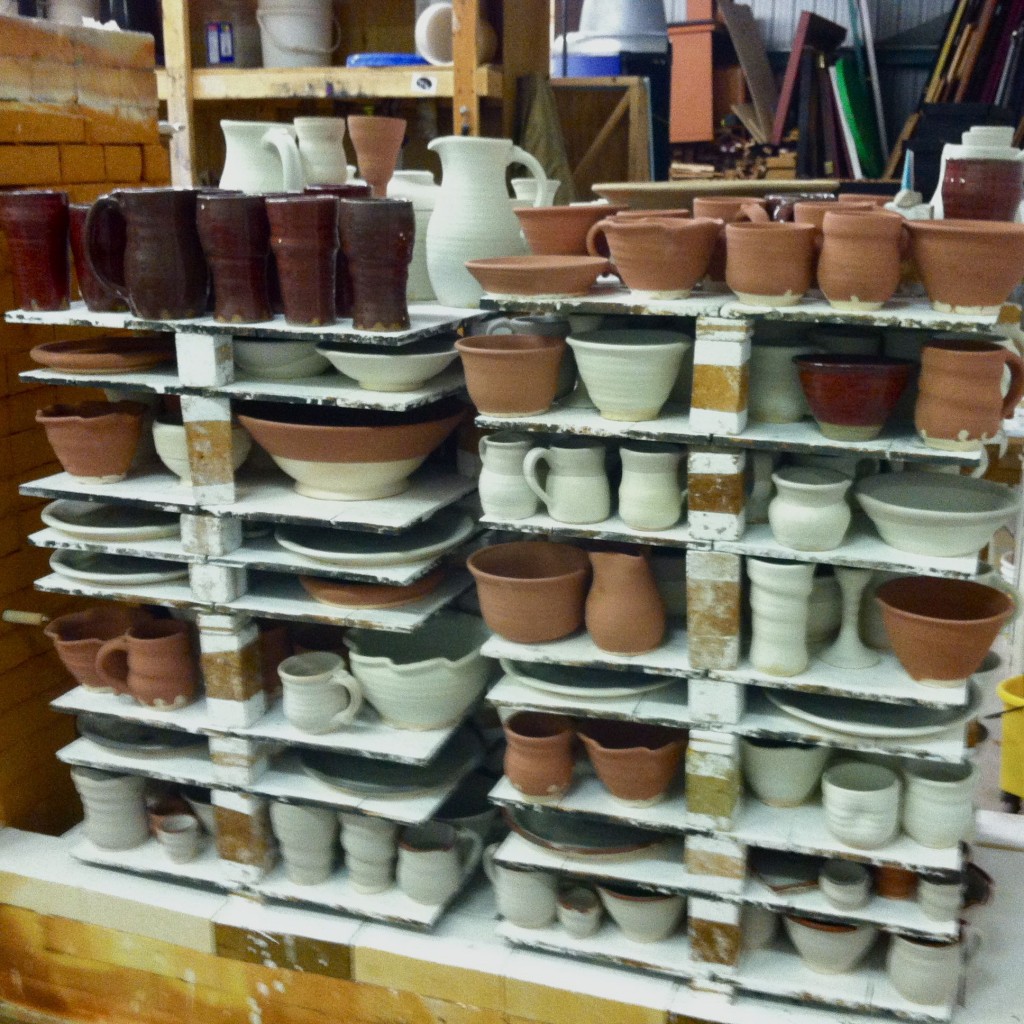
Unlike my great clay ogre, Joel can’t afford to make ugly pots. He makes his living through pottery, and as a result, his experiments with glaze need to be calculated and precise. He needs to know exactly how each part of the glaze works; how copper, cobalt, and iron make red, blue, and rust colors when the glaze reacts with fire in the kiln. Glazes transform clay bodies from ogres into princesses. However, as Joel continues to explore glaze chemistry, he finds that these potions are often difficult to create. Like the alchemists I wrote about last post, Joel works tirelessly to find the right balance of form and color that’ll turn a clay body into a beautiful work of art. For his livelihood, each glaze must reach for a certain standard of beauty.
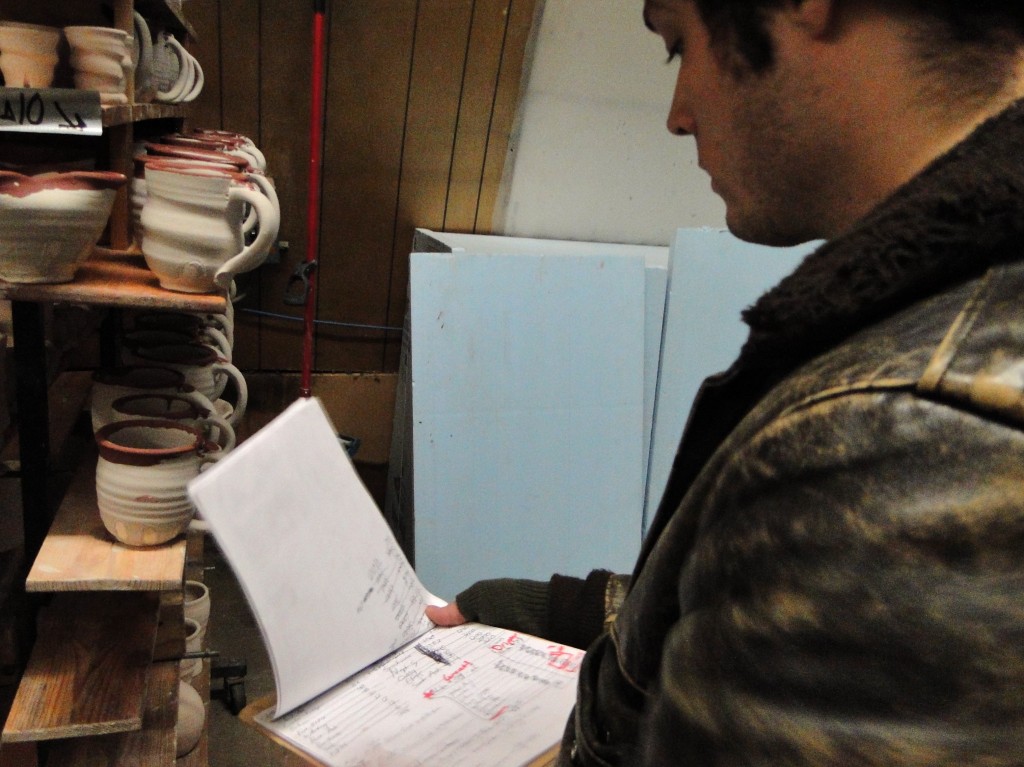
Looking back at his previous body of work, I think Joel’s been chasing this certain type of beauty all along. It’s been hidden in his work throughout the years, and now I feel we’re just starting to uncover it in the color blue.
Take a look at the gallery below to see an evolution of this blue color. Even in woodfiring, salt firing and copper red glazes, the color blue shows up. I can track the color throughout his work back to 2008:
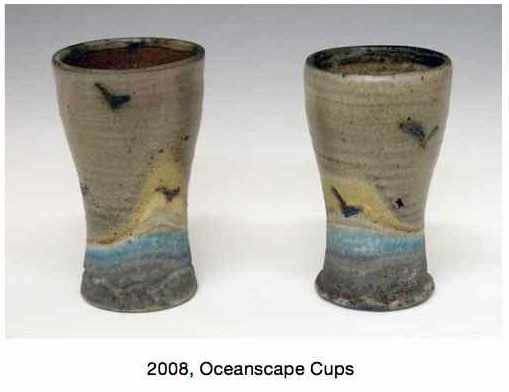
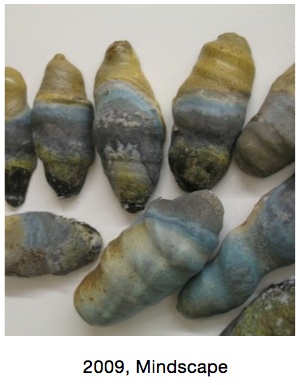
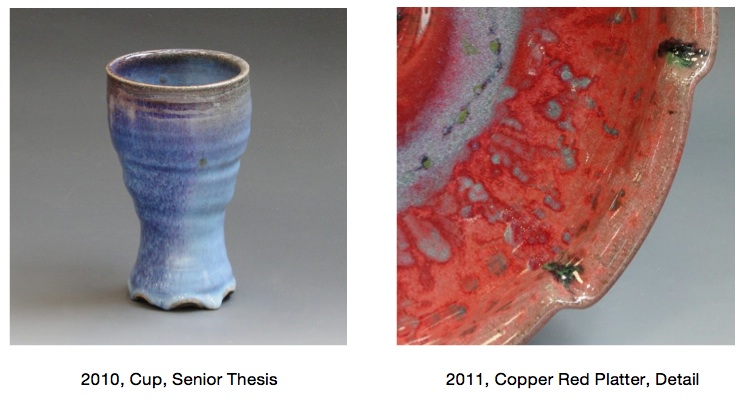
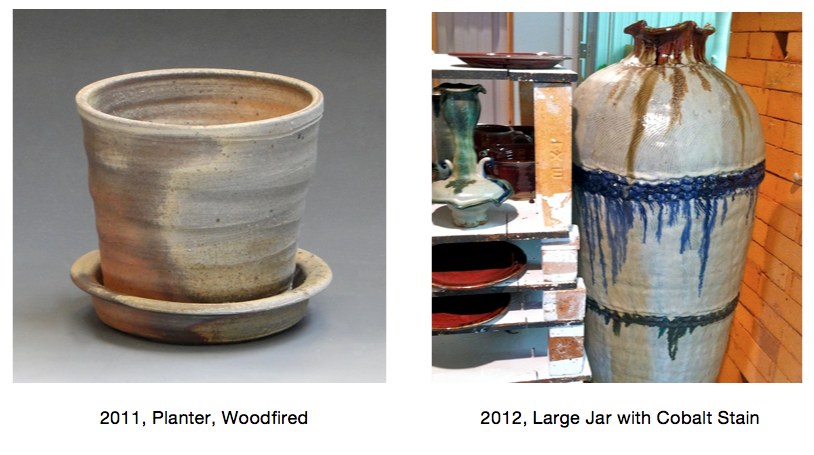
Numerous potters talk about the lore of blue pottery. Throughout the ages, potters can’t seem to shy away from it. I’ve heard some contemporary potters even refer to the color as cash-flow blue.
Our text book this semester has been Bernard Leach’s A Potter’s Book. Now a 50 year old text, Leach provides a rich history of how ceramics has evolved. His book not only offers rich lessons of the past, but it also gives insights into the future. But even Leach, who wrote the book after decades of experience under his belt, could not seem to understand the lure of the color blue in ceramics. These stories share his experiences with blue glazes:
“At my St. Ives workshop each summer we are asked by three visitors out of four for colour and yet more colour, blue and the more intense the better, is easily the favourite.”
– A Potter’s Book, page 36
“Yesterday we had a good bunch of people, 2 of whom at least knew a good pot when they saw it. One woman started by asking if we hadn’t got any ‘blue pots’, and when David showed them that the last olive-blue glaze for which we have experimented for years, she said: ‘Oh! Do you call that blue?'”
– A Potter’s Book, page 227-228
Perhaps what this all boils down to is something we talked about in the beginning -the pursuit of beauty. Some of the best potters in the contemporary art world don’t make beautiful work. Their work is strange, ugly and confusing.
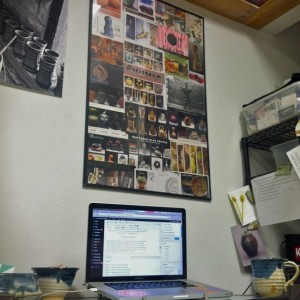 With this in mind, does the color blue still have a place in the contemporary ceramic world? This poster sits above our workspace, and it’s made from postcards Joel picked up in Philadelphia in 2010 at NCECA (National Council for Education for the Ceramic Arts). It gives a snapshot of the contemporary ceramic work, and shows only a handful of simple, blue pots. Joel will be at the conference in Milwaukee next week networking with contemporary potters and pottery enthusiasts. His goal is to show that the color blue continues to have a strong lure in both historical pottery as well as contemporary ceramics. He wants his work to be a bridge between historical potters like Leach and contemporary artists like Paige Dansinger. As a result, we’ve prepared some innovative market ideas, re-designed the website home page, and packed the online store with blue pots and artist collaborations with Dansinger. We’re prepared for the biggest ceramics conference in the country and we’re hoping to lure people to us with our blue pots!
With this in mind, does the color blue still have a place in the contemporary ceramic world? This poster sits above our workspace, and it’s made from postcards Joel picked up in Philadelphia in 2010 at NCECA (National Council for Education for the Ceramic Arts). It gives a snapshot of the contemporary ceramic work, and shows only a handful of simple, blue pots. Joel will be at the conference in Milwaukee next week networking with contemporary potters and pottery enthusiasts. His goal is to show that the color blue continues to have a strong lure in both historical pottery as well as contemporary ceramics. He wants his work to be a bridge between historical potters like Leach and contemporary artists like Paige Dansinger. As a result, we’ve prepared some innovative market ideas, re-designed the website home page, and packed the online store with blue pots and artist collaborations with Dansinger. We’re prepared for the biggest ceramics conference in the country and we’re hoping to lure people to us with our blue pots!

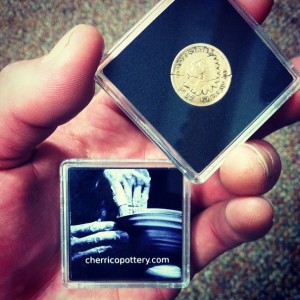
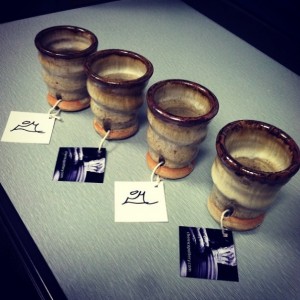
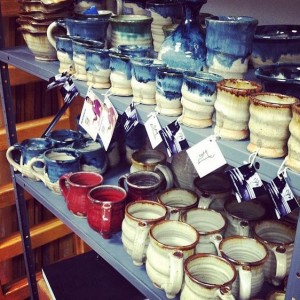
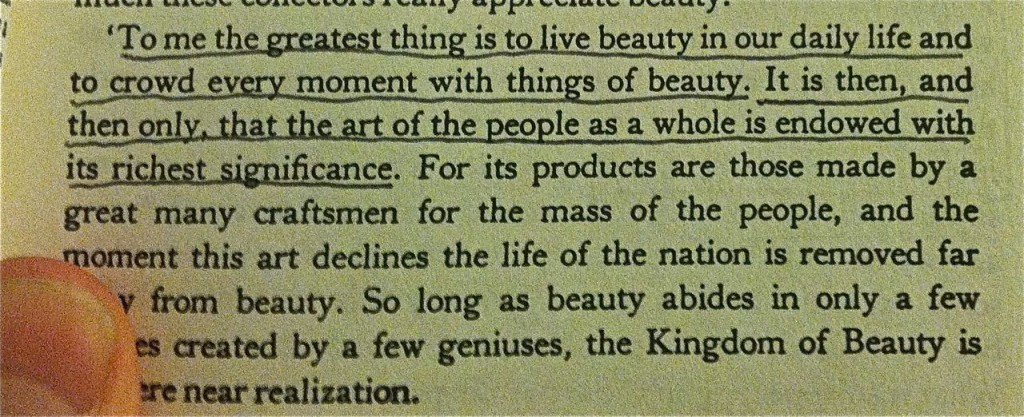
Athletic Pottery: Tough Times Call for Strong Potters
When Joel went to see Bill Gossman at a small pottery workshop in New London, the time-tested artist wedged, centered, and threw 25-50lb. blocks of clay at a time. These blocks, impressive in themselves, soon became massive 3-4ft. jugs that Gossman needed to finish in multiple sections. If you have ever thrown pottery or seen somebody throw pottery, then you’ll understand the effort Gossman needed just to raise that amount of clay once. He did it three times per jug.
![]()
![]()
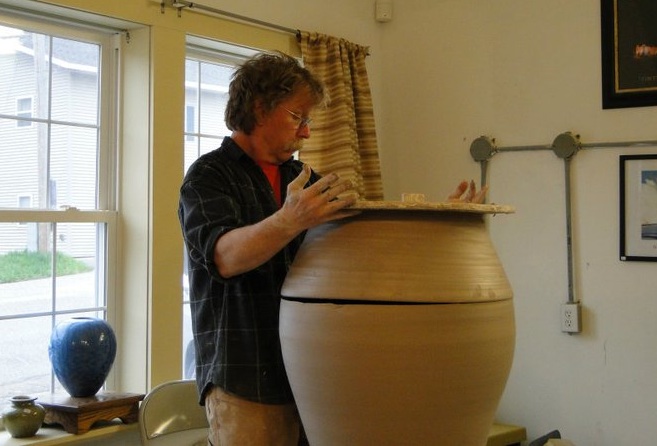
As someone who’s only thrown about ten functional mugs in his life, potters like Gossman amaze me. They possess an unparalleled dedication to their craft. And like any professional athlete, these guys will often spend years practicing and perfecting their work before they receive any recognition.
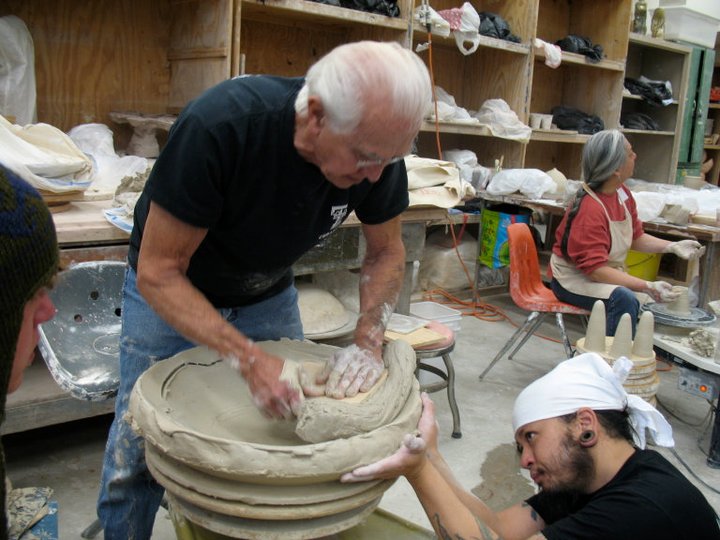
Consider someone like Don Reitz for example. When Joel went to see the 84 year old potter at a 2009 workshop in Flagstaff, AZ, Reitz started working before anyone else in the morning and stayed well over an hour late each night. In only 2 days, Reitz went through 2 wheelbarrows full of clay! These pictures show only a small sample of Reitz’s work, but listen to him discuss it here for the full story.
Warning -it gets emotional.
Years after the conference, Joel contacted Reitz. This workshop directly led to Joel’s creation of Mindscape, and Joel wanted to connect with Reitz by sending him a cup or two as a thanks. Still humble after years at the wheel, Reitz wrote back saying, “A cup is not necessary, I’m just happy to know that my work is appreciated. Also, watch the movie The World’s Fastest Indian. Rent it or whatever. It’s about TOTAL COMMITMENT.” 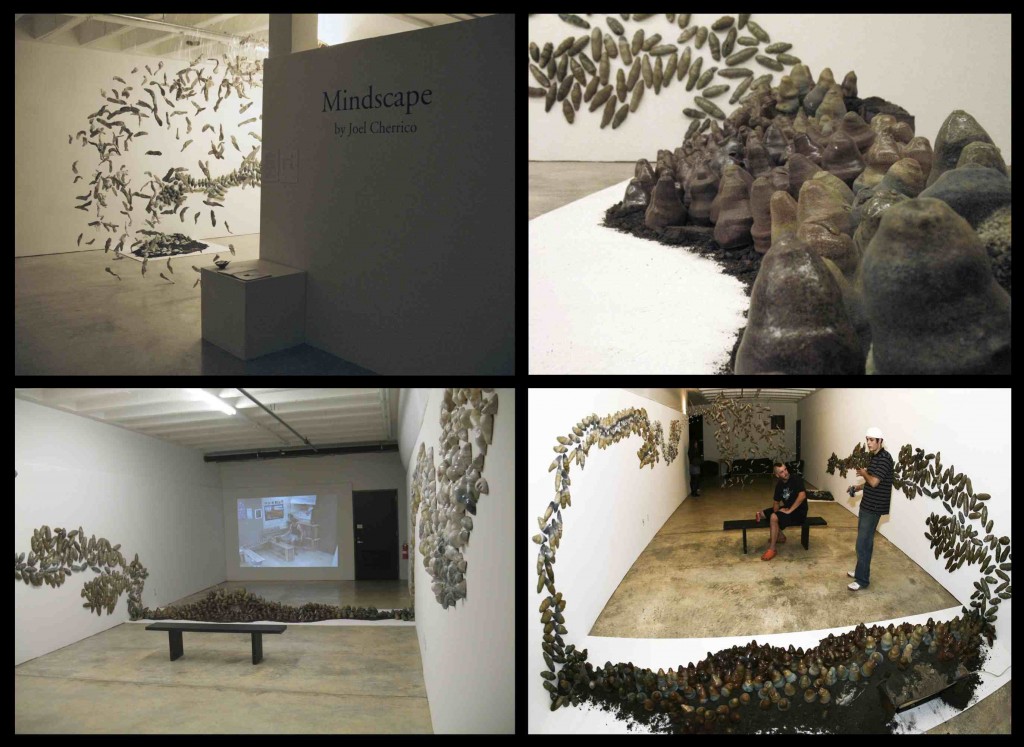
As spectators to art, we only see the final product. We never see the hours of studio-time behind the world’s fastest motorcycle or even a massive clay sculpture. We see the game, but we don’t see the practice. What I’ve learned from hearing the stories of people like Gossman, Reitz, and Joel is that to make beautiful pieces of art, a potter needs to balance inspiration with dedication. Like Reitz says, he needs TOTAL COMMITMENT by immersing himself in the clay.
Michael Cardew was a historically famous potter that lived a tough life partly by choice and also by circumstance. While in Africa, he made pottery in places where water was so scarce, he had to use caustic wood ashes to make clay more plastic. Joel often looks at Cardew’s biography when he needs motivation, especially in the more difficult times of his career. Here’s a quote from the book that I feel speaks well to Joel’s pottery. Joel first heard it from his friend and author Ken Ferber. It says:
“…a good design in pottery is the product of a tension or ‘dialect’ between the demands of pure utility and those of pure beauty, and only a long experience and continual struggle enables you to achieve a successful fusion of the two.”
-Michael Cardew
The biography goes on to describe Cardew as a potter with “athleticism” and his work with clay as, “direct, physical and urgent.” I think you could prescribe the same qualities to almost any professional potter, especially guys like Gossman and Reitz who continue to make massive ceramic pieces throughout the second half of their career. These guys are making a statement through their effort. And in many ways, their art then becomes the direct expression of this effort.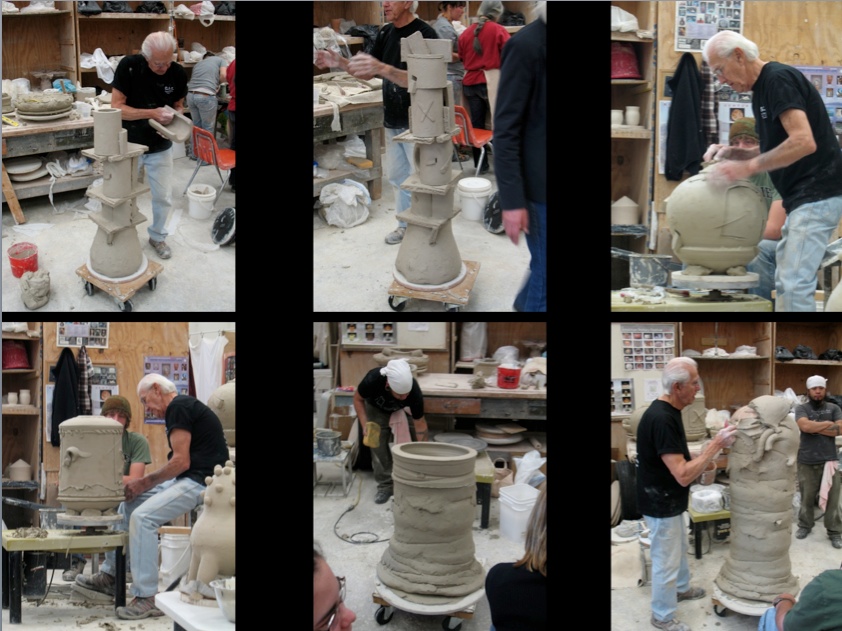
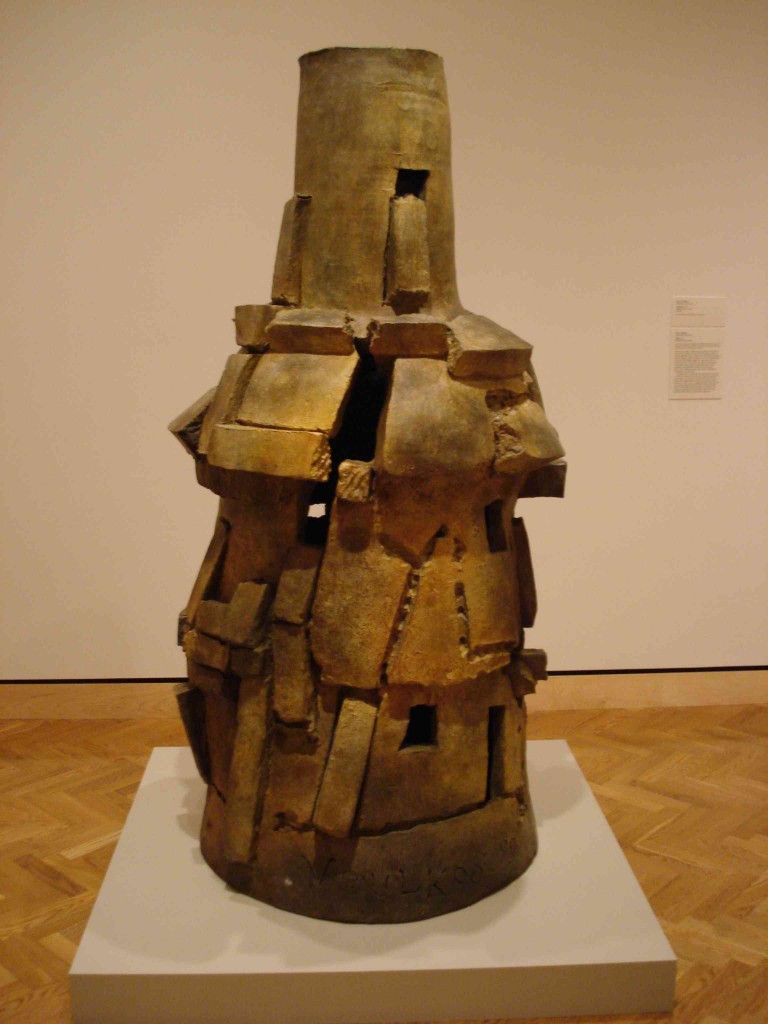
A lot of this philosophy parallels the Abstract Expressionist school of thought which was made popular by artists like Jackson Pollack and Peter Voulkos. Joel himself draws heavily from the abstract expressionists. He feels abstract expressionism has the potential to foster a healthy lifestyle through clay. Mindscape was Joel’s first experiment with abstract expressionism, but even with his functional pottery or hump throwing demonstrations, he likes the almost unconscious movement of working through 50lbs. of clay spinning on the wheel. For him, clay becomes an expression that’s at every moment “direct, physical, and urgent.”
